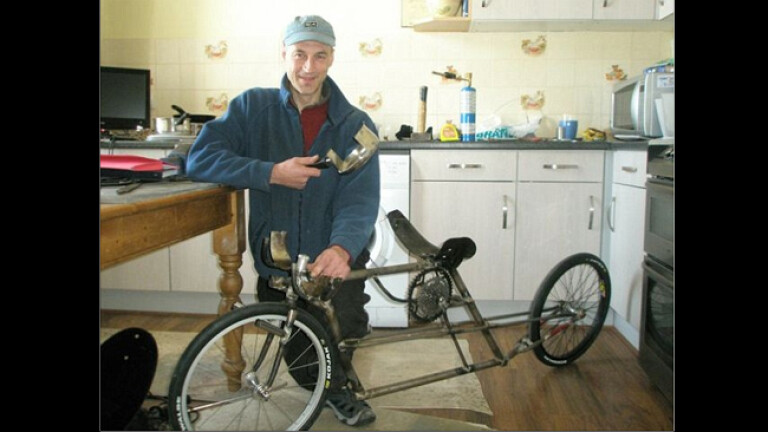
Former world champion cyclist Graeme Obree is set on breaking the world speed record for a human-powered vehicle. But he has a strange way of going about it — he's built a bike out of an old burnt saucepan set.
Obree, whose triumphs in the cycling world were immortalised in the 2006 film The Flying Scotsman, designed and built the bike himself and is confident of achieving up to 160km/h on it. This would be more than enough to beat the previous human-powered record, which stands at 133.284km/h and was set by Canadian cyclist Sam Whittingham in 2009.
The bike's spartan design is being kept tightly under wraps by the former 4,000m world champion — who will only reveal that he has dubbed it "Pie in the Sky" and that the saucepan will be crucial to its success because of the light flat surface it provides for shoulder support.
It also features gearing unlike anything seen on traditional racing bikes. A single turn of the pedals in top gear will push the bike about 10m as opposed to regular bikes which give just over 3m. This is thanks to an unconventional two-chain system which makes the bike two-wheel drive, effectively doubling its power.
The bike's unusual set-up also means that Obree rides it lying horizontally on his front, with his nose just centimetres from the road and his hands doing the peddling. This is vastly different from Whittingham's record ride, which saw the rider pedal from a reclining position.
Obree has succeeded with rudimentary household equipment in the past. In 1993 he set the world velodrome record on a bike made from washing machine parts.
He will make his record attempt in September at the World Human Powered Speed Challenge in Nevada. The record must be reached within a distance of 200 metres after building up speed.

COMMENTS